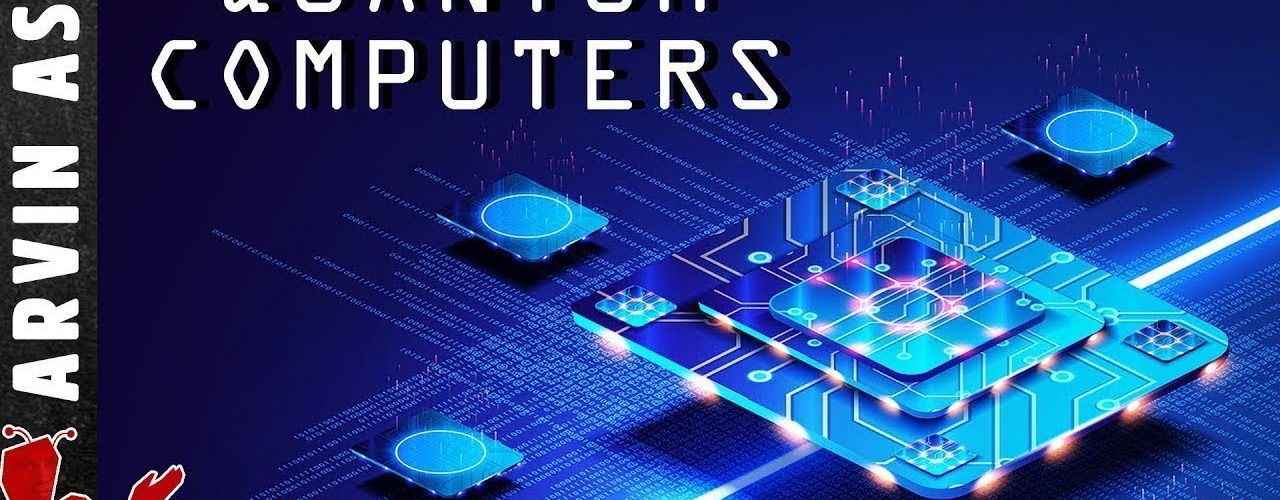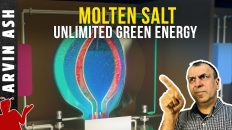(To study Quantum Computing in depth, go to: https://brilliant.org/arvinash — you can sign up for free! And the first 200 people will get 20% off their annual membership. The Brilliant course, “Quantum Computing” is one of the best offered online today! Enjoy!
Chapters:
0:00 – Quantum Computers
0:55 – Common computer components
2:51 – What is a Transistor?
3:20 – What is a qubit?
6:07 – Advantages of superpositions
6:40 – How does a quantum computer compute?
7:30 – Quantum algorithms
8:54 – What kinds of problems can Q computers solve?
10:32 – Why are quantum computers difficult to build?
11:50 – Is the universe a giant computer?
Summary:
(This is part 1 or at least a 2 part series on quantum computing. Each video will be successively more in-depth.) Classical and quantum computers share many general components – power supply, data storage, RAM memory, motherboard, but they differ in the way the central processing unit (CPU) works. A classical CPU is made from transistors, which is like an on/off switch. If it is on, then it’s like the number 1 or true. If it is off it’s like the number 0 or false. This is what binary means. A transitor represents a binary bit.
Quantum computers do not use binary bits, they use quantum bits or qubits. What is a Qubit? It is a bit in a superposition of 1 and 0. What does superposition mean? Quantum theory shows that quantum objects such as electrons, prior to measurement, are in multiple states at the same time. So something like the spin of an electron, which is a measurement of its intrinsic angular momentum, when measured is either up or down. When not measured, it is in both states of up and down. This is what superposition is.
If you visualize a qubit as a sphere, a classical bit can be 1 or 0 – the north pole or south pole. But a qubit can be in any place on the surface of this sphere depending on the superposition. A single qubit can be any mixture of 1 and 0, so the possible values are infinite! So whereas the classical binary bit can only take one of two values, the superposition allows a qubit to take on a potentially infinite number of values.
A qubit can be created by any quantum object like photons, electrons or even atoms. It doesn’t really matter. It just needs to be a quantum object in superposition. Qubits allow us to ask several questions at once during computation, “what is the result if the qubit is one? What is the result if the qubit is zero? What is the result if it is anything in between?”– thus we can calculate the process where the bit is both zero and one and anything in between.
This downside is that the result of the computation will also be in superposition. This means that the quantum computers needs to maintain superposition throughout the process. The inputs AND outputs are both in superposition. The quantum computer operates WITHOUT any measurement of any kind. Because there are no measurements, the computer state evolves according to quantum mechanics.
The computer follows multiple computational paths at the same time, analogous to the way a photon could follow multiple paths through a double slit experiment. It only has a certain probability of ending up on certain locations.
However, at the end, there has to be a measurement to get a final result. And this final result from the computer is always classical. It is going to be a one or zero. How do we know whether we should get a one or zero? This is controlled by the quantum algorithm, which are clever programs created by programming scientists that use mathematical tricks to make sure that the probability of getting the correct is answer is as high as it can be.
How do quantum Algorithms work? They word by applying destructive interference on the wrong results, and constructive interference to the correct results. It does a kind of interference experiment to find the most likely answer.
So how is this so much more powerful than classical computers for solving problems? The quantum computer doesn’t do the usual stuff in a faster way. It doesn’t calculate all the possible results very quickly. It calculates all functions for all inputs at once. It calculates multiple functions at once for multiple possible inputs.
#quantumcomputer
Why is it hard to build quantum computers?
Qubits have to be isolated from the outside world. They cannot interact with any molecules or photons or other particles. This requires extreme cooling, because heat can modify or destroy the superposition by interacting with Qubits. So, this is why quantum computers are cooled to near absolute zero, that’s -273 degrees Celcius, to effectively eliminate all external thermal energy, so that the superposition is not modified or broken. In addition, Qubits can’t talk to the outside world, but they have to be able to talk to each other very fast. So these connections that the qubits must have with each other is not trivial.







